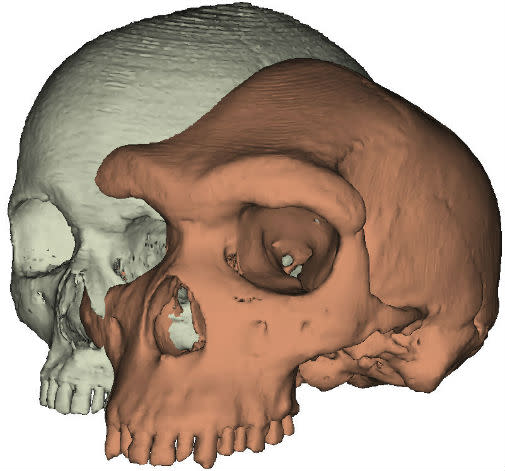Scientists have just worked out the real reason why human beings have eyebrows

It sounds surreal, but eyebrows might actually have been key to the survival of the human race in our early days, a University of York study suggests.
Scientists have long debated why other hominins – including our ancestors – had gigantic brow ridges, while we evolved a smooth forehead with hairy eyebrows capable of movement.
The researchers scanned a fossilised skull, and believe that eyebrows allowed early humans to express emotions such as recognition and sympathy.
That tiny difference could have given humans the communications skills to establish large, social networks, the researchers say – and thrive in a hostile world.

Using 3D engineering software, the researchers looked at the brow ridge of a
fossilised skull, known as Kabwe 1, held in the collections of the Natural History Museum.
It belonged to a species of archaic hominin – Homo heidelbergensis – who lived between 600,000 and 200,000 years ago.
MOST POPULAR TODAY ON YAHOO
Bargain hunter buys car for 100 mile trip to Bristol because it’s cheaper than the train
Instagram model films final moments before private plane crashes, killing six people
Three ‘coronal holes’ appear on the sun as solar storm buffets Earth
Car ploughs into pedestrian during vigil for cyclist killed in hit-and-run
Lead author of the paper, Dr Ricardo Godinho, of the University of York said: ‘We used modelling software to shave back Kabwe’s huge brow ridge and found that the heavy brow offered no spatial advantage as it could be greatly reduced without causing a problem.
‘Then we simulated the forces of biting on different teeth and found that very little strain was placed on the brow ridge. When we took the ridge away there was no effect on the rest of the face when biting.
‘Since the shape of the brow ridge is not driven by spatial and mechanical requirements alone, and other explanations for brow ridges such as keeping sweat or hair out of eyes have already been discounted, we suggest a plausible contributing explanation can be found in social communication.’
The researchers say that our communicative foreheads started off as a side-effect of our faces getting gradually smaller over the past 100,000 years.
This process has become particularly rapid in last 20,000 years and more recently, as we switched from being hunter gatherers to agriculturalists – a lifestyle that meant less variety in both diet and physical effort.


